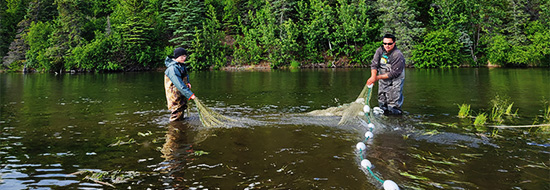
The People, The Land, The History
Our land and people are diverse and united by shared experience and history.
 The Lake & Peninsula Borough is located on the Alaska Peninsula, southwest of Anchorage. It is comprised of 17 communities, including 6 incorporated cities. It is bordered on the west by Bristol Bay and on the east by the Gulf of Alaska.
The Lake & Peninsula Borough is located on the Alaska Peninsula, southwest of Anchorage. It is comprised of 17 communities, including 6 incorporated cities. It is bordered on the west by Bristol Bay and on the east by the Gulf of Alaska.
Climate: The Lake and Peninsula Borough is split between the transitional and maritime climate zones. The region experiences long, cold winters and short, cool summers. The transitional part of the borough is more arid, with around 23 inches of rain per year, while the southern part of the borough has a maritime climate.
Square Miles of Land: 23782
Square Miles of Water: 7125

The Lake and Peninsula Borough region has been inhabited almost continuously for the past 9,000 years. The area is rich in cultural resources and diversity. Yup'ik Eskimos, Aleuts, Athabascan Indians, and Inupiaq people have jointly occupied the area for the past 6,000 years. Russian explorers came to the region during the late 1700s. The late 1800s brought the first influx of non-Native fishermen and cannery operations. A flu epidemic in 1918 was tragic to the Native population. Reindeer were introduced to assist the survivors, but the experiment eventually failed. In the 1930s, additional disease epidemics further decimated villages. After the Japanese attack on Dutch Harbor during World War II, numerous military facilities were constructed on the Alaska Peninsula, including Fort Marrow at Port Heiden. The borough was incorporated in 1989.
 Economy: Commercial fishing and fish processing are the most significant sectors of the economy within the borough, which contains three of the state's most important salmon fishing districts: Egegik and Ugashik on Bristol Bay and Chignik on the Pacific coast. The majority of borough residents rely upon commercial fishing as a primary source of cash income. Seven shore-based processors and numerous floating processors operate within borough boundaries, generally importing their workforce from outside the borough. Tourism and recreational activities are the second most important industries in the borough and are rapidly increasing in economic importance. The borough contains over 60 hunting and fishing lodges. Approximately 100 professional guides are registered to operate within borough boundaries. Government services also provide employment. Subsistence hunting and fishing are important to year-round residents.
Economy: Commercial fishing and fish processing are the most significant sectors of the economy within the borough, which contains three of the state's most important salmon fishing districts: Egegik and Ugashik on Bristol Bay and Chignik on the Pacific coast. The majority of borough residents rely upon commercial fishing as a primary source of cash income. Seven shore-based processors and numerous floating processors operate within borough boundaries, generally importing their workforce from outside the borough. Tourism and recreational activities are the second most important industries in the borough and are rapidly increasing in economic importance. The borough contains over 60 hunting and fishing lodges. Approximately 100 professional guides are registered to operate within borough boundaries. Government services also provide employment. Subsistence hunting and fishing are important to year-round residents.
Story of Igiugig: Native Sovereignty in Alaska
This short film looks at how a sovereign Native people are planning for the future, as told through three short chapters: Chapter 1: Nunaput (Our Homelands), Chapter 2: Capricaraq (Persistence); Chapter 3: Pinarqut (Possibility)

Heartbeat Alaska - Chignik Lagoon
In 2004 Heartbeat Alaska, a local television program, profiled Chignik Lagoon and the fishing in Southwestern Alaska.
Part One : The episode begins with interview with Julius Andersen and Alec Pedersen followed by a look at the salmon populations and the effects of the co-op on the local fishermen.
Part Two: This episode is an in-depth look at the issues surrounding the experimental sockeye cooperative fishery at Chignik Lagoon, Alaska.
In 2005 Heartbeat Alaska revisited Chignik Lagoon. Fishing for a Solution looks at the fishing industry and the division caused by the Chignik Salmon Cooperative.

Story of Igiugig: Native Sovereignty in Alaska

This short film looks at how a sovereign Native people are planning for the future, as told through three short chapters: Chapter 1: Nunaput (Our Homelands), Chapter 2: Capricaraq (Persistence); Chapter 3: Pinarqut (Possibility)
Heartbeat Alaska - Chignik Lagoon

In 2004 Heartbeat Alaska, a local television program, profiled Chignik Lagoon and the fishing in Southwestern Alaska.
Part One : The episode begins with interview with Julius Andersen and Alec Pedersen followed by a look at the salmon populations and the effects of the co-op on the local fishermen.
Part Two: This episode is an in-depth look at the issues surrounding the experimental sockeye cooperative fishery at Chignik Lagoon, Alaska.
In 2005 Heartbeat Alaska revisited Chignik Lagoon. Fishing for a Solution looks at the fishing industry and the division caused by the Chignik Salmon Cooperative.




